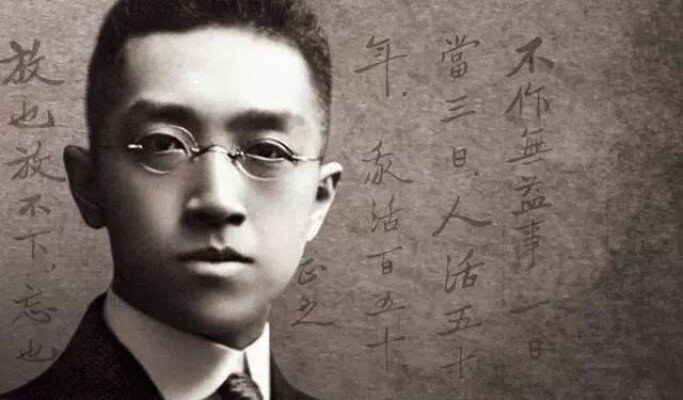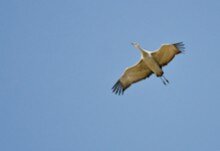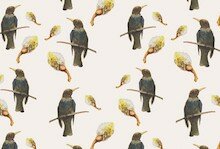Re-reading Hu Shi

From 1915-1916, a group of Chinese students in the United States were engaged in heated debate on whether everyday plain speech (vernacular language) should be used in poetry writing. Hu Shi 胡适 (1891-1962), attending Columbia University then, started writing free verse, allegedly influenced by Poetry magazine in Chicago. He published ‘A preliminary proposal for literary reform’ in the prominent journal New Youth (La Jeunesse) in China in January 1917, followed by eight poems in the February issue. He returned to China in July 1917 to promote literary revolution and became one of the most important intellectuals during the May Fourth New Cultural Movement of 1919, which demanded democracy and freedom. In October 1919, he published an essay titled ‘On New Poetry’. In 1920, the first anthology of New Poetry was published, followed by Hu Shi’s own collection of New Poetry, Book of experiments. A hundred years later we are still writing New Poetry and experiment with it, for better or worse.
Today, all schools of poets in China, left and right, governmental or independent, unanimously consider January 1917 as the beginning of our current tradition of avant-garde poetry. And Hu Shi is acknowledged as the first poet of New Poetry, and his first poem in the 1917 publication, ‘Butterflies’, as the first New Poem in China. But very few people like this butterfly poem; and nobody takes him as a great poet because most of the poems in his first book resemble ‘Butterflies’. I’m not motivated to translate it either but will just give a basic idea here: ‘Two yellow butterflies take off as a pair. / One suddenly returns from the sky / leaving the other one alone in despair / with no more desire to further fly’.
What Hu Shi considered revolutionary in this poem was a break away from the tradition of ‘one poem one rhyme’ by alternating a-b-a-b, a Western pattern. But it sounds like a nursery rhyme today. So I took the standard view of regarding him as a poor poet in the preface of New Cathay – Contemporary Chinese Poetry 1990-2012 (Tupelo Press, 2013). But three months after the anthology was published, I saw Hu Shi’s Student Diaries (Chinese edition, Taipei: Shanghai Bookstore Press, 1937) and was surprised to find his other poems completely different, especially a long one written on 22 July 1916, a month before he wrote the ‘Butterflies’. I would regard this as his first true New Poem, and this is what his New Poetry meant to be. (An expanded translation of the poem can be found here.)
(答梅觐庄——白话诗)
Days are getting cool, people are less busy,
Old Mei starts a fight and accuses Hu Shi
of being too ridiculous in saying
that "Live literature is what China needs"
that "Writing must be in vernacular speech!"
Who says there are live and dead words?
Isn’t the vernacular too vulgar?
This was a declaration of free verse in vernacular language. South Society (1909-1923) mentioned at the end of the poem was a poetry club that Mei Jinzhuang (Old Mei) belonged to at that time, where most of the poets were writing in old, bookish Chinese.
While most of Hu Shi’s published poems are short and simple, ‘Reply to Old Mei’ has 106 lines divided into five parts, and it is not only long but much more interesting with a citation of major literary works in Chinese history and his critical view of them. It’s much freer with irregular lines (vs. the ridged 5 or 7 words per line of the old Chinese poetry). It’s charged with anger but also with humor, collaged with different texts – remarks from Mei Jinzhuang and other people and his own counter remarks. In today’s standard it may be seen as hybrid writing with some parts clearly more poetic, and some parts as prose (because poetry can only be lyrical and/or narrative but not debating/argumentative, which belongs to essays, according to the old definition.)
In November 2013, I wrote an essay to correct my previous comments on Hu Shi and called for a ‘Re-evaluation of Hu Shi’. Chen Jun 陈均 (1974), a poet and poetry critic in Beijing, responded with an essay in the same month saying that it might be a fresh look into the history, but this poem was previously used as ‘background materials’ only, not as a poem. He tried to support me by saying that this poem could be seen as doggerel (打油诗) and Hu Shi’s Book of experiments contained some other doggerel poems, and other prominent poets in the 1920s and 1930s of China also wrote doggerels. I would like to argue that doggerels in Chinese history are usually short and funny, but this poem is substantially long and serious, even though it’s funny at the same time.
Was Chinese New Poetry born in the U.S.?
Literally so. Hu Shi was in the U.S. from 1910 to June 1917 with scholarships from the Boxer Indemnity Grant – first at Cornell studying agriculture, but he changed to philosophy and literature and then moved to New York City for his Ph.D. in philosophy. It was a period of time with great changes. Qing Dynasty was overthrown in 1912, replaced by the Republic of China. The temporary president Sun Yatsun was replaced by the first president of the country, Yuan Shikai, then Yuan died in 1916. World War I broke out in 1914.
On this side, new movements of poetry were taking place in the U.S. . . . Hu Shi wrote ‘Eight don’ts’ and published them in the New Youth journal in October 1916 in Shanghai, with no response. He made it into an essay with a new title, ‘A preliminary proposal for literary reform’, and published it again in New Youth in January 1917, when the journal was relocated to Beijing, and this time he received an enormous response. Here is some of what he proposed then: Don’t write things that say nothing; don’t be sentimental; don’t use clichés; don’t avoid slang or colloquial words. It may look similar to the Imagist manifestos, but he was studying Shakespeare, Tennyson and Browning. His diaries show that he was also reading Chinese classical philosophy and literature and drawing strength from there.
The most ‘revolutionary’ poem of the Literary Reform has been buried in the author’s diaries. I’m not even sure if it’s politically correct to dig it out, the poem that’s written in the U.S. not published in China. But if we take it as poetry, not only will the beginning of New Poetry be dated one year earlier, 1916, and Hu Shi’s reputation will change a great deal, but also it will help us define what is New Poetry in China, and how it has evolved to what it is today. Wasn’t Hu Shi promoting free verse and plain spoken language? Then why didn’t he include in his first poetry collection the poem that’s clearly free verse in spoken language? I’ve found some clues in his diaries. Mei Jinzhuang, a literature major at Harvard, laughed at this poem as ‘not a poem’ ‘with no rhymes or refined language or crafts at all’. The other Chinese students laughed at it too: ‘It’s a total failure’. Hu Shi defended himself in the dairies: ‘It’s a half-joking, half-serious experiment of verse in vernacular language. It might be worthless, but it’s important in my personal history of writing . . . It’s a satire’.
‘Reply to Old Mei’ is informative and persuasive with historical views of the changes in Chinese language and literature. It has a kind of irony that’s lacking in most of the poetry in the first five decades in China. It’s carefully crafted with a balanced structure. It’s direct, funny and dramatic. It’s not sentimental – most of the poems in the 1920s of China were too sentimental and empty. Regarding Mei’s accusation of no rhymes, I can see rhymes throughout the entire second part: xiao, diao, dao, yao, dao, niao, liao, nao, hao, diao, miao, jiao, mao, zao, bao, kao and hao, although fewer in the other parts. But who says free verse needs rhymes?
Does a poem need to be published to be a poem? If so, and if the ‘Reply to Old Mei’ is not considered a poem because it’s not published, then what about the first two poems by his fellow poet Chen Hengzhe, which did get published in the Overseas Students Quarterly in 1916?
Chen Hengzhe 陈衡哲 (1890-1976) came to the U.S. in 1914, first attending Vassar College, then the University of Chicago. She returned to Beijing in 1920 and became the first woman scholar and professor in China. While in the U.S., she supported Hu Shi’s literary reform by writing poems and short stories in the vernacular language. In November 1916, she published two poems in the U.S.-based Overseas Students Quarterly, and in May 1917, her first short story appeared in the same magazine. In 1918, she published more poems and short stories in New Youth. Today, she is commonly considered as the first woman writer in Chinese modern history, arguably the first fiction writer before the literary giant Lu Xun, who published his first short story in 1918, a year after hers. The question is whether literature published in diaspora magazines counts as part of the Chinese literary cannon. If publication anywhere in the world counts, she would be the first poet of Chinese New Poetry. But here comes, again, the question of what is New Poetry. I will reproduce her two poems below, along with my translations:
初月曳轻云,
笑隐寒林里;
不知好容光,
已映清溪底。
Moon
Through a thin cloud a new moon climbs up,
then disappears with a cold falling leaf;
but its radiant face reflected in the stream
stays in the clear water and won’t leave.
风
夜闻雨敲窗,
起视月如水;
万叶正乱飞,
鸣飙落松蕊。
Wind
At night I hear the rain on my window.
I get up and see moon light, a water fall.
Leaves fly around, soaring, and knock
on the pine trees. The young cones fall.
(1916)
On the surface level, she followed the traditional form of ‘Five-word quatrain’ with the typical 0-a-0-a rhyme scheme. Since Hu Shi never specified whether New Poetry should rhyme or not, plus there was strong sentiment to stick to the rhyming systems, these two pieces could pass as New Poems. Hu Shi praised them and recorded them in his diaries, but he never took them as the first New Poetry, because he had published similar semi-new poems in the same diaspora magazine in 1914, especially the one titled ‘Big snow’. A true New Poem should be something like ‘Reply to Old Mei’, without constraints of how many words in each line and how many lines in each stanza, or the tonal patterns (平仄) in each line and the ‘contrasts’ (对仗) in each two lines, etc.
What’s new in New Poetry?
Confucius says ‘day by day make it new’ (through Ezra Pound’s translation); Hu Shi was experimenting with something new every year. His literary experiment involved translation as well, using different types of Chinese from old to new. In 1914, he translated Browning’s ‘Epilogue to Asolando’ and Byron’s ‘The isles of Greece’ in the ancient language style of Qu Yuan (343–278 BCE). Later in the same year, he visited Boston and Concord and translated Emerson, but this time in a much freer style:
They reckon ill who leave me out;
When me they fly, I am the wings;
I am the doubter and the doubt,
I am the hymn the Brahmin sings.
弃我者,其为计拙也。
背我而高飞者,不知我即其高飞之翼也。
疑我者,不知疑亦我也,疑我者亦我也。
其歌颂我者,不知其歌亦我也。
He called this ‘prose’; we call it free verse today. The language is classical sounding, but it suits this poem very well, tight and powerful. In July 1915, he wrote a poem in English about the Statue of Liberty in New York, implicating his literary reform in term of ideas, language and form. ‘Crossing the harbor’ begins with, ‘As on the deck half-sheltered from the rain / We listen to the wintry wind’s wild roars’, and ends with, ‘And my comrade whispers to me, / There is “Liberty”!’ Except a few words, it’s a short poem of free verse with the clear language that he was looking for in Chinese. I’m translating the whole poem into Chinese here:
甲板上半遮挡着雨
我们听见冬天的风在狂野吼叫,
听见缓慢的波浪撞击大都会港岸;
我们搜寻地球之上
闪耀的群星
它们照亮了巨大黑暗的苍穹,——
在那里——
在那盛大的辐射球体之上,
一盏灯超群绝伦。
我的战友向我耳语,
看,那里有“自由”!
I don’t know why he didn’t re-write it in Chinese. It sounds contemporary. It seems that it was through writing free verse in English that he finally moved to the writing of Chinese free verse. In his later essays, he defined the New Poetry as a new way of writing that started in the summer of 1915, born out of a long debate. So I would take all his writings in 1915 and 1916 as his experiments including his poems in English. Finally in July 1916, he wrote his loud declaration in that unpublished long poem in Chinese ‘Reply to Old Mei – A poem of plain speech’.
Although Chen Hengzhe supported him by publishing two poems of the new language, but not in free verse, what she wrote and published in 1918 was much less restricted. ‘People say I’m crazy’ was a dramatic monologue, with irregular lines, no rhymes, about an elderly patient rambling in a hospital. Influence from Robert Browning? Chinese ancient poets also used dramatic monologue. ‘River merchant’s wife’ by Li Bai (701-762) is an example. Was Robert Browning influenced by Chinese ancient poetry? Possibly, especially since he spent much time in Italy. Marco Polo brought scrolls of poetry and painting to Italy. Later on, Tang poetry was introduced to Italy in the 18th Century and became popular in Europe in the mid-19th Century. Browning had a Chinese friend who was a poet. But Li Bai’s influence, if any, needs further study. Since the Chinese students who were enrolled in American colleges were also reading classical Chinese poetry, the seemingly influence from Browning could be from the Tang poets that they were reading. The point is that the early New Poets were inspired by earlier Western poets, as well as earlier/ancient Chinese poets.
Hu Shi won the Corson Browning Prize for his essay ‘A defense of Robert Browning’s optimism’. And among the many poets he translated into Chinese, such as Omar Khayyám, Goethe, Heine, Tennyson, Browning, Shelley, Byron, Campbell, Hardy, DH Lawrence, etc. he worked on Robert Browning more and better. The following is his Chinese translation, apparently better than the original English:
Never doubted clouds would break,
Never dreamed, though right were worsted, wrong would triumph,
Held we fall to rise, are baffled to fight better,
Sleep to wake.
– from ‘Epilogue’ by Robert Browning
从不转背而挺身向前,
从不怀疑云要破裂,
虽合理的弄糟,违理的战胜,
而从不作迷梦的,
相信我们沉而再升, 败而再战,
睡而再醒。
The following one is probably his best translation:
And the sun looked over the mountain's rim:
And straight was a path of gold for him,
And the need of a world of men for me.
– ‘Parting at morning’ by Robert Browning
太阳光从山头射出去:
他呢,前面一片黄金的大路,
我呢,只剩一个空洞洞的世界了。
The Chinese language here is fresh, even looked at today. I would probably only change three words if it were my translation. Here ‘the need of a world of men’ predicts the situation in his final days, just as ‘Butterflies’ describes his solitude in the early years,
Is the New Poetry movement a Renaissance in China?
Hu Shi has written 300 poems in Chinese, and translated 30 poems and a collection of 17 short stories into Chinese. The Collected works by Hu Shi were published in China in 2003, consisting of 44 volumes, mostly essays and diaries. As New Poetry continued blooming through the 1930s and 1940s, many other poets were very productive and left volumes and volumes of poetry.
Hu Shi is now remembered as a pioneer of New Poetry, never a major poet, due to his own poor judgment, or the severe attacks from his contemporaries on his more serious experiments, such as the long poem ‘Reply to Old Mei’ and his translation of Byron’s ‘The isles of Greece’. He was proud of his translation of Sara Teasdale’s ‘Over the roof’, which was talked about excessively in the studies of New Poetry for the wrong reasons. He felt that he discovered a way of translating the iambic into Chinese, which further supported the use of modern Chinese: in classical Chinese each word is one syllable, but in modern vernacular Chinese one word can be 2-3 syllables, creating the stressed and unstressed. By imitating the English iambic lines, he created a new kind of free verse in Chinese. However, I think his translation of Auld Robin Gray (老洛伯) by Anne Lindsay is even better, completely free and with a natural rhythm, and it’s one of the best free verse poems in the early Chinese New Poetry.
To paraphrase what Hu Shi wrote in his diaries: his revolution was nothing new, Dante wrote in Italian instead of Latin, Chaucer got rid of the old English, and Martin Luther moved on from the old German. As for the literary revolutions in China: Qu Yuan’s poetry was the first revolution, short poems of 5 or 7 words per line were the second revolution, the prose poems of the Han Dynasty (202-220) were the third, the regulated poetry of the Tang Dynasty (618-907) with a strict tonal system was the fourth, the de-regulated Ci of Song Dynasty (920-1279) was fifth, and the change from Ci to the lyrics and drama of Yuan (1271-1368) and Ming (1368-1644) Dynasties was the sixth revolution. He was merely continuing the spirit of making changes and moving forward.
If we look at the notorious butterfly poem more closely, we will see that it’s a ‘double five-word quatrain’ (双绝句):
xxxxx, xxxxx。 a
xxxxx, xxxxx。 b
xxxxx, xxxxx。 a
xxxxx, xxxxx。 b
The regulated five-word quatrains in the High Tang Dynasty are five words per line and four lines per stanza, followed by an optional second stanza. The change to the double quatrains horizontally may look trivial, but the extended lines demonstrate the major changes in language: in modern Chinese a word can be two to three characters, and therefore the new language doesn’t fit into the old forms any more. (Also of note is that Hu Shi was the first to use punctuations in Chinese.) More importantly, he revived the old quatrain from the Tang Dynasty and gave it a new shape, the doubled lines.
Hu Shi acknowledged the vernacular language used in ancient poetry. As poetry died out in the Ming and Qing Dynasties, he called for a revival of poetry and revival of vernacular language. Vernacular Chinese has existed throughout history. Li Bai’s best known poem, ‘Quiet night thought’ (静夜思), is an example. Li Bai wrote two kinds of poetry, using either classical or vernacular Chinese.
Li Shutong 李叔同 (1880-1942), Hu Shi’s contemporary, 11 years older than him, spent five years in Japan studying art and music and returned to China in 1910, the year Hu Shi left China for the U.S. Li and several others brought Western culture to China through Japan, and Li was the first to teach Western painting and music in China. In 1915, he wrote the lyrics for a song, ‘Farewell’, breaking the traditional metrical system of poetry. It was rediscovered in the 1940s and again in the 1980s.
Outside the pavilion, along the ancient trail
green grass stretches, joining the horizon.
Evening wind blows the willows in the fading tune of a flute
while the sun sets over the mountains and mountains.
At the sky's end and the ocean’s corner
friends are scattered with only a few to hold.
Tonight we drink and exhaust the joys,
then we part and our dreams will be cold.
(1915)
The original Chinese has alternating numbers of characters/space in each line, with an incredibly amazing pause in the first line of each stanza:
xxxxx (a)
xxxxxxx (b)
xxxxx (b)
xxx, xxx (c)
xxxxx (c)
xxxxxxx (b)
xxxxx (b)
It’s rhymed but not in the traditional way. The language is simple and plain, a little bit melancholy, awaking a sense of nostalgia immediately. It’s not cutting edge in today’s standard, but it was innovative in 1915. The lyric was written under the influence of a Japanese lyricist who re-wrote the lyrics for an American song, but each was independent work. I would love to take this as the first New Poem in Chinese history. However, Li Shutong didn’t have a manifesto of literary reform or consciousness of nationwide reform expressed elsewhere, such as in essays. Nor did he influence anyone. The other consideration is: to discuss literary influence from Japan is not politically correct in China, because of the Japanese invasion of China in the 1930s and because of ’national pride’. It might be for the same reason that Hu Shi’s poetry, written in the U.S. and unpublished in China, is never considered as Chinese poetry. Or perhaps I’m oversensitive. It might well be that most poets have not seen ‘Reply to Old Mei’. Personally, I’m not really concerned about where New Poetry was born but how it has evolved. Li Shutong in China and Hu Shi in America were both trying to write a new kind of poetry using plain spoken language, with some ancient elements. It has been noted that Li Shutong’s ‘Fairwell’ resembles the poetic style of Fan Zhongyan (989-1052) in the Song Dynasty, which supports the notion that the New Poetry movement in the early 20th Century is a Renaissance in its full meaning.
What’s most important and mostly forgotten is that New Poetry is not against the ancient poetry in China, but the classical language (文言文), especially the ‘eight-legged’ language (八股文) that prevailed in the Qing Dynasty (1644-1912), which was becoming more and more rigid and stiff because of the long Imperial Examination System (科举制) from 605 to 1905. The ending of that system and the downfall of the Qing Dynasty made the literary reform possible. As Hu Shi has indicated, New Poetry is a renaissance of ancient Chinese poetry, using plain and clear language for the complicated modern life.
Hu Shi was also interested in earlier poetry from the Middle East. He translated Omar Khayyám (1046-1131) so beautifully:
該把這糊塗世界一齊打破,
再磨再煉再調和,
好依著你我的安排,把世界重新造過!
It’s interesting to notice that the Rubaiyat (鲁拜集) has the same shape as the Tang quatrains, four lines per stanza, and same rhyming patterns. But what’s in Hu Shi’s Chinese translation is a new music made possible by using modern Chinese with a classical tone. As ‘Reply to Old Mei’ says, ‘Texts of three thousand years, up and down, living or dead,/ who knows how many have been hijacked’. In a positive sense, being ‘hijacked’ can bring changes, something ancient with a new life.
Artistically, ‘Reply to Old Mei’ is quite contemporary with its hybrid writing and collage of various types of texts. It’s the traditional ‘standard’ view of what’s poetry that makes it non-poetry. I’m even beginning to wonder if The Book of Songs edited by Confucius was really the first anthology of poetry in Chinese history. We have The Book of Mountains and Seas from the ancient time, an epic of 18 volumes about the mythologies, geographies, and polytheistic religions of ancient China. Why has it never been considered as poetry? Is it because of its irregular shape (different numbers of words in each line) and lack of rhyme? What else was filtered by Confucius? According to his standard, ‘Reply to Old Mei’ would never be a poem, ever, despite the fact that there has not been any other writings, not to say poems, that has defended poetry in contemporary China so powerfully and eloquently in the last 100 years.
A postscript: Hu Shi spent his later years in the U.S. and Taiwan, where he died in 1962, aware of the nation-wide criticism against him launched by Mao Zedong (1893-1976), Chairman of China from 1949 to 1976, a classical poet.
An earlier version of this essay appeared in the San Diego State University journal Poetry International, double issue 20/21, 2015.








